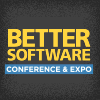Better Software Conference & EXPO 2006

PRESENTATIONS
|
Building Traceable UML Models
While effective for modeling requirements, analysis, or design of a software system, UML diagrams are typically used in isolation or only for portions of a system. The resulting inconsistencies have the potential to create more confusion than clarity, negating the investment in the modeling process. Explore tips, tricks, and techniques to build a complete, traceable UML model for all aspects of a software application. Thomas Bullinger shares ways to gather behavioral requirements and map them into UML use cases. |
|
|
Code Coverage Myths and Realities
You've made a commitment to automate unit testing as part of your development process or you are spending precious resources for automated functional testing at higher levels. You may be asking yourself: How good are those tests anyway? Are many tests checking the same thing while large parts of the code go completely untested? Are your tests triggering the exceptions that normally show up only in production? Are your automated tests adequately covering the code, the requirements-both, neither? |

Andrew Glover, Vanward Technologies |
|
Common Scheduling Mistakes and How to Avoid Them
A project schedule is an essential tool for planning the project, monitoring progress, managing the impact of changes to scope and requirements, and ultimately achieving customer satisfaction. Unfortunately, three common mistakes can make schedules useless-or worse, even destructive to the project: (1) using date constraints when dependencies should be used; (2) using dependencies when resource constraints should be used; and (3) poorly structured work breakdown structures. |
|
|
Don't Settle for Better Software - Make Truly Great Software
Too many teams create very decent products that, for whatever reason, fail to rise above the crowd and truly capture the popular imagination. They are surprised when their products are mostly ignored by the marketplace, which seems to be captivated by some other shiny geegaw that's functionally inferior and more expensive. In many product categories, from software to consumer electronics, the product with the most market share is often more expensive and less functional than the number two product. |
|
|
Essential Software Quality Planning
An old-yet still true-saying is "You can't test quality into a software product." By planning for the quality expected in your software, your team and management will focus on the big picture-integrating development methods, the test processes, and the customer and product requirements within the framework of a quality assurance perspective. Starting with the key element of quality planning and its benefits, Tony Raymond explains how to derive quality objectives from requirements using a "just enough" balanced approach. |
|
|
Even the Best Get Stuck: Transitioning to Agile Developement
For some organizations Agile methodologies like XP, Scrum, and Crystal work well off-the-shelf. However, many companies struggle with these practices and find that lightweight methodologies leave them without support for key aspects of their business. Most end up adopting a hybrid of multiple methodologies mixed in with some old practices. This is risky business. |
|
|
Fishing for Requirements in an Agile Project
When you go fishing, you want to use the right lures, catch lots of fish, and avoid falling out of the boat. Developing requirements for an Agile project is similar-you need to use the right process, get the requirements you need with minimum effort, and introduce minimal risk and rework. Because every Agile project has different needs, goals, and constraints, a "one size fits all" requirements process does not work in every Agile project. |
|
|
How to Estimate Anything
Given the choice between making an estimate of the time and resources to complete a project or getting root canal surgery, most of us would rush to the dentist’s office. We know that the pain of a root canal is short lived ... poor estimates can cause us agony and frustration for months or even years to come. The good news and bad news is that anything can be estimated. |

Payson Hall, Catalysis Group Inc |
|
Industry Benchmarks: Insights and Pitfalls
Software and technology managers often quote industry benchmarks such as The Standish Group's CHAOS report on software project failures; other organizations use this data to judge their internal operations. Although these external benchmarks can provide insights into your company's software development performance, you need to balance the picture with internal information to make an objective evaluation. Jim Brosseau takes a deeper look at common benchmarks, including the CHAOS report, published SEI benchmark data, and more. |
|
|
Integrating Security into the Development Lifecycle
Software security is neither a development problem nor an IT operations problem. Rather, it is a paramount business problem requiring a multidisciplinary approach that minimizes organizational risk when delivering software products. By making a program-level commitment to security, IT organizations will be in the best position to defend their businesses from growing threats. Ryan English explores business management and the process components of defining, designing, instituting, and verifying secure development practices. |
|


